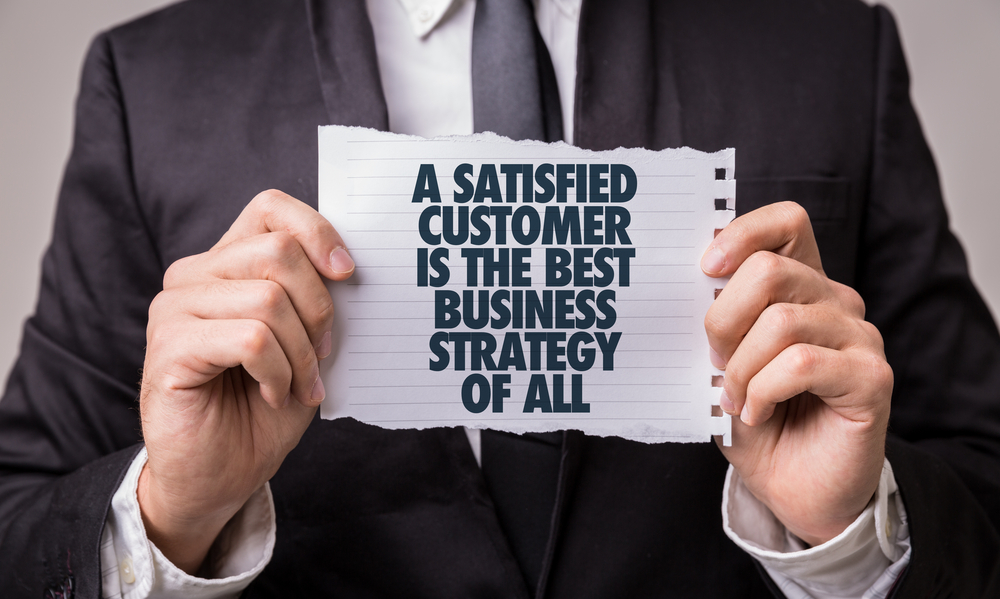MenuClose
Without clients, you don’t have an income. And without an income, you don’t have a business. Therefore, having a well-designed customer strategy is crucial to success.
There are many things to consider when looking at your client strategy. Get it right, and you end up working with people you like, generating sales and achieving long-term growth. Get it wrong, and you’re in trouble.
So how should you approach this key part of the strategic planning puzzle?

First, what exactly do we mean by client or customer strategy?
Customer strategy refers to a comprehensive plan and approach a company develops to effectively acquire, retain, and satisfy its customers.
It involves understanding the needs and preferences of your target market and aligning your business’ resources and activities to deliver superior customer value and drive profitable growth.
A great customer strategy guides you in making decisions related to product development, pricing, marketing, sales, customer service, and overall customer experience.

When first starting out in business, most people will take on whoever they can as a client. However, this has potential drawbacks, including misalignment of expectations, resource strain, and impact on your brand image.
Being strategic about the types of clients you take on results in the opposite. That’s why pinpointing your ‘ideal’ target customers is crucial.
Here are some of the key elements you should consider:
Ideally, your clients or customers should have similar values to your own. And we always recommend a ‘no dickhead’ policy!
Importantly, make sure you set a realistic goal and time frame to plan what you want your client base to look like (well, the majority, at least).
Once you’ve defined your customer profile (or target customer persona), share it with your team, then review your current client list. Who aligns, and who doesn’t? Then categorise your clients to identify higher priority levels of service.
Take this opportunity to also speak to your clients or customers about what you expect from them and what they can expect from you.

When considering finances in your customer strategy, there are several important factors to take into account. These include:
A good thing to consider when looking at your customers is the Pareto Principle. When applied in business, this states that 80% of your income comes from 20% of your clients.
Is this true in your business? Do the analysis—the results may surprise you.
Also, take action on clients or customers who are creating losses.
The only exception here is loss leaders. These are clients who may not be overly profitable but, through other actions, provide business opportunity and/or profit. For example, they’re good referrers.

Because ongoing clients are desirable clients, building strong customer relationships should always be a core part of your strategy. Never take a client for granted.
As a starting point, we recommend putting yourself in your client's shoes and treating them as you’d want to be treated. This sets the bar for good client relations.
Next, consider whether you can enhance your current client relationships (the ones you enjoy working with)—and how. For example, could you improve communication by being more proactive instead of waiting for them to contact you?
Could you add distinctive value by holding client events to share new information and show them you appreciate their business? Or introduce clients to each other for mutual benefit?
Plus, think about your client’s client. If you can help your client increase sales from their client, the more they buy from you!
Finally, don’t forget to seek client feedback to gauge how happy they are with you and identify any areas for improvement.
And set expectations for those ‘non-performing’ clients. If they’re not meeting expectations, sack them. But carefully consider how you do this.

Developing a comprehensive customer strategy is vital for your business's long-term success and sustainability.
By following the steps above, you can establish a solid foundation for acquiring, retaining, and satisfying your clients or customers.
Importantly, know that developing a successful customer strategy is an ongoing process that requires dedication, flexibility, and a customer-centric mindset. Just take it one step at a time your efforts will pay off.
If you need support with your company’s customer strategy, reach out to your Maxim advisor or get in touch with our team. We can challenge and assist you in considering the right approach.